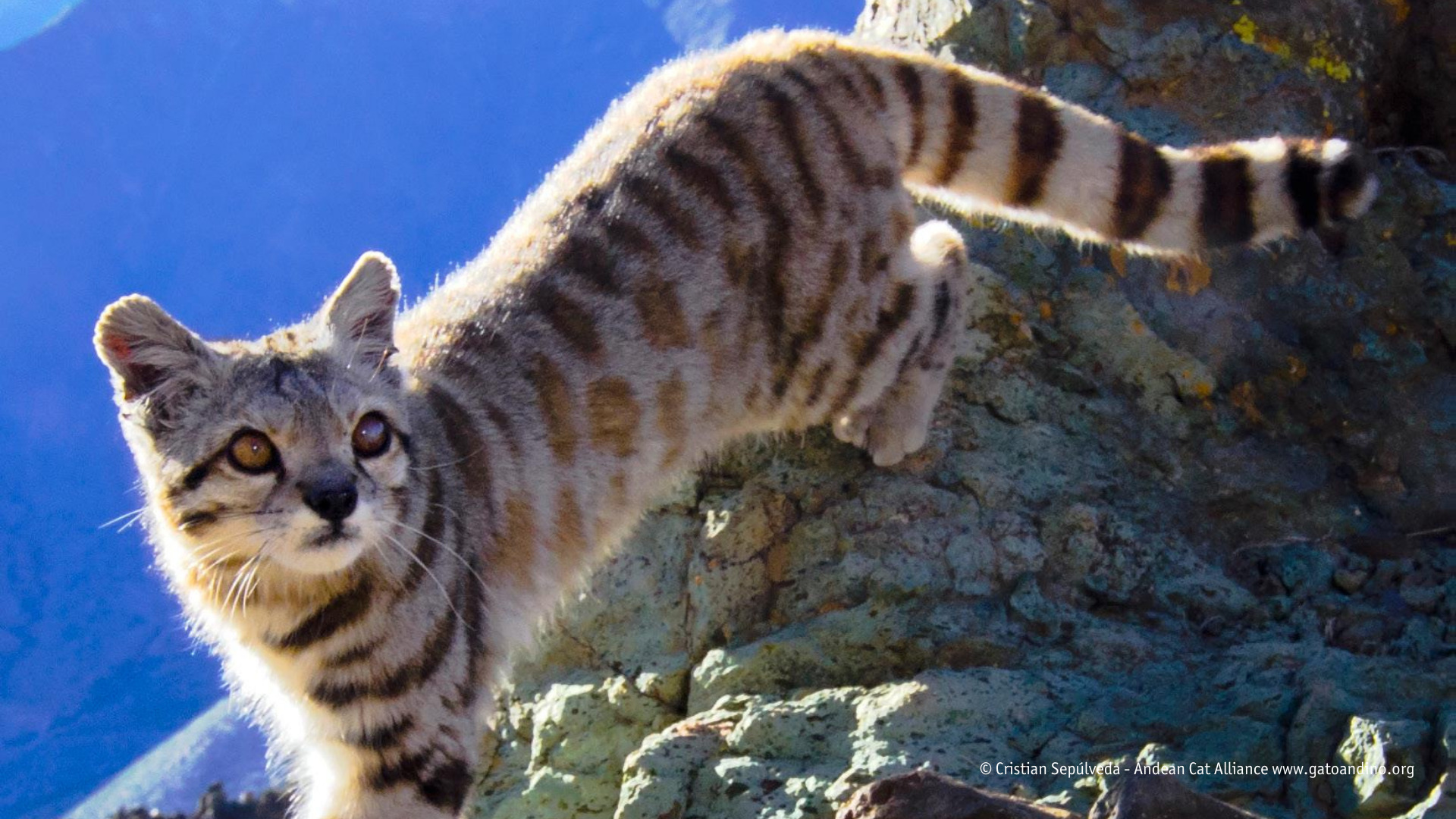Explaining what your research is about in a clear and concise way isn’t easy, especially if your audience has little or no prior knowledge of the subject. That’s why UAntwerp organises PRESS>SPEAK, an annual writing and presenting competition for young researchers taking their first steps in science communication. Every year, the winners of the writing contest are featured on the Pintra blog.
For the PRESS>SPEAK writing competition, researchers were instructed to explain their research in a text of three paragraphs of max. 150 words. They also had to come up with a short and pithy title, a striking subtitle, and a picture illustrating the difference their research aims to make in society. The second winning text, written in Dutch by Jonas Lescroart (Faculty of Science), is about the mountain cat, an extremely rare and almost mystical cat species.
The mountain cat: a shadow in the Andes
The mountain cat is one of the most enigmatic cats in the world. Scientists have hardly spotted the animal in the wild in the past 25 years, and the locals regard its appearance as something spiritual. Our newly acquired access to the mountain cat’s genome reveals exceptionally low genetic variation, in line with its endangered status and small population size.
Only on the highest plateaus of the Andes, in a lunar landscape of salty deserts, lives an extremely rare and almost mystical cat species. With its thick fur and long tail, the Andean mountain cat (Leopardus jacobita) looks like a miniature snow leopard. Driven by scarce food supply, consisting almost exclusively of mountain viscachas, the animals maintain a large and solitary territory. Unlike other South American cats of the leopardus genus, such as the pampas cat and the ocelot, we know very little about the mountain cat. We had to wait until 1998 for the first photo of a live specimen, and to this day no zoo has a mountain cat in captivity. Biologists who study the mountain cat do so indirectly and on the assumption that they will never see a mountain cat in the wild. Nevertheless, camera traps, tracks and DNA offer a modest glimpse into this cat’s remote existence.
Low genetic variation, but no inbreeding
By reading the DNA of a single individual, we can learn a lot about the species as a whole. We count the differences between the genetic material of paternal and maternal origin, the so-called genetic variation. Provided some caution is exercised, this finding allows for conclusions that concern the entire population. So it is a godsend that the Andean Cat Alliance was able to obtain a blood sample of a mountain cat, caught by a farmer in an attempt to protect his chickens. The sample was then entrusted to our partner university in the south of Brazil (PUCRS), and we are working with them for the genetic analysis.
The sample in question has remarkably little genetic variation, as much as five to ten times less than the pampas cat and the ocelot. Low genetic variation can result from recent inbreeding, when a population is too small to remain healthy in the long term. If that were the case, in the genome we would observe areas without variation alternating with areas of normal variation. Instead, we see a consistent level of low variation throughout the genome. Such a pattern indicates a small but stable population that is able to remain genetically healthy. This makes the preservation of its current habitat in the Andes the most important measure to protect the endangered mountain cat.
Jonas Lescroart – Faculty of Science, research group SPHERE (Svardal Lab)


